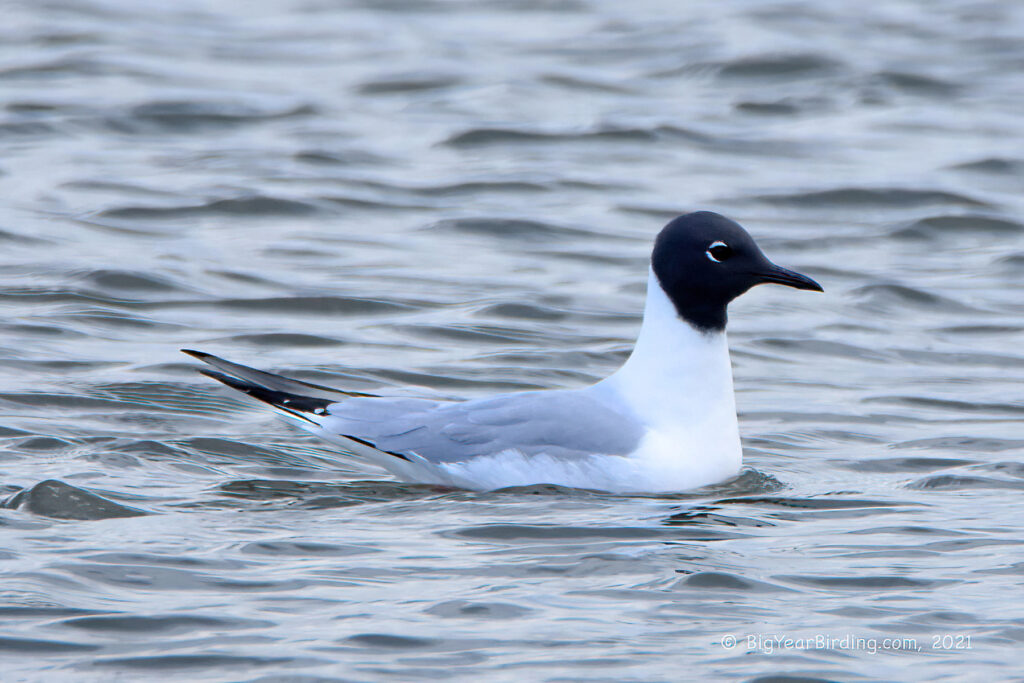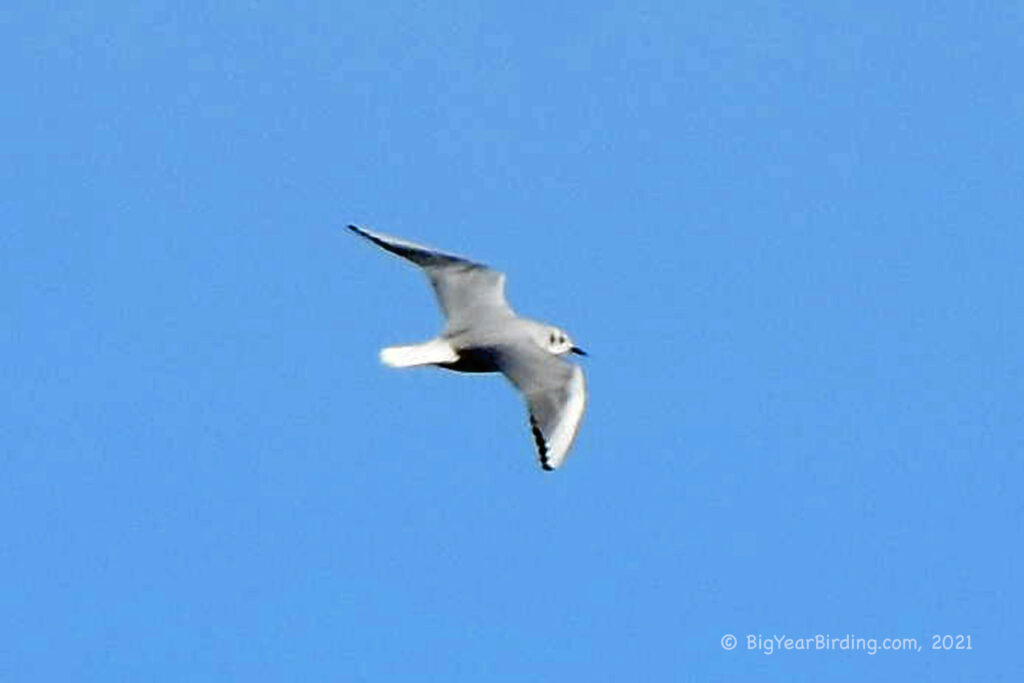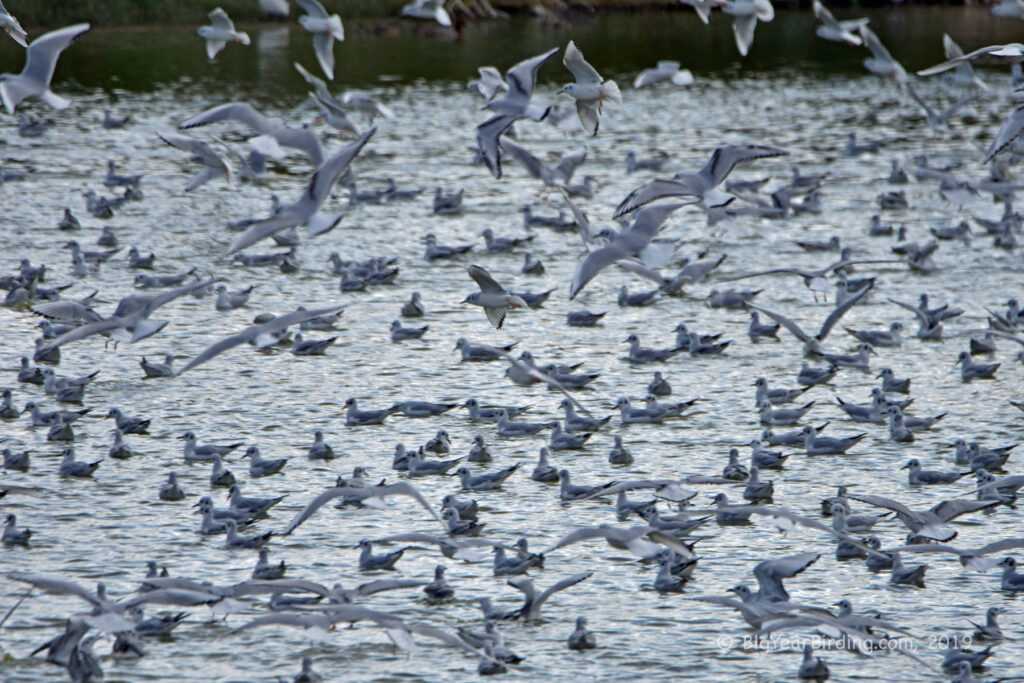
The Bonaparte’s Gull is a small, graceful bird that can be found across North America, Europe, and Asia. It measures about 13 inches in length and has a wingspan of approximately 32 inches. The adult birds weigh around 6 ounces, making them one of the smallest gull species.
The distinguishing field marks of Bonaparte’s Gull are its black hood, bright white underparts, and delicate size. The black hood extends from the top of the head down to the nape and contrasts sharply with the rest of the bird’s white body. The wings are pale gray with black tips and a white trailing edge, and the bill is small and black with a slight upward curve at the tip. During the non-breeding season, the black hood fades to a smudgy gray, and the bill becomes slightly paler.
Bonaparte’s Gull breeds in the boreal forest regions of Canada and Alaska, and migrates southward to spend the winter months along the Pacific, Atlantic, and Gulf coasts of the United States, as well as the Great Lakes region. In the fall, the birds begin their southward journey in August, and they return northward in April and May. Some individuals may also migrate to winter in parts of Central and South America.
During the breeding season, Bonaparte’s Gulls prefer nesting in coniferous trees near water bodies, and they lay two to three eggs per clutch. The chicks hatch after about three weeks and fledge in approximately four weeks. The birds feed primarily on insects, small fish, and crustaceans, which they capture by hovering over the water surface and diving in for a quick snatch.

In conclusion, the Bonaparte’s Gull is a small, elegant bird with distinctive black hood, bright white underparts, and a small, delicate bill. It measures about 13 inches in length and weighs around 6 ounces. The birds breed in the boreal forest regions of Canada and Alaska and migrate southward to spend the winter months along the coasts of the United States and the Great Lakes region. During the breeding season, they prefer nesting in coniferous trees near water bodies, and they feed primarily on insects, small fish, and crustaceans.


